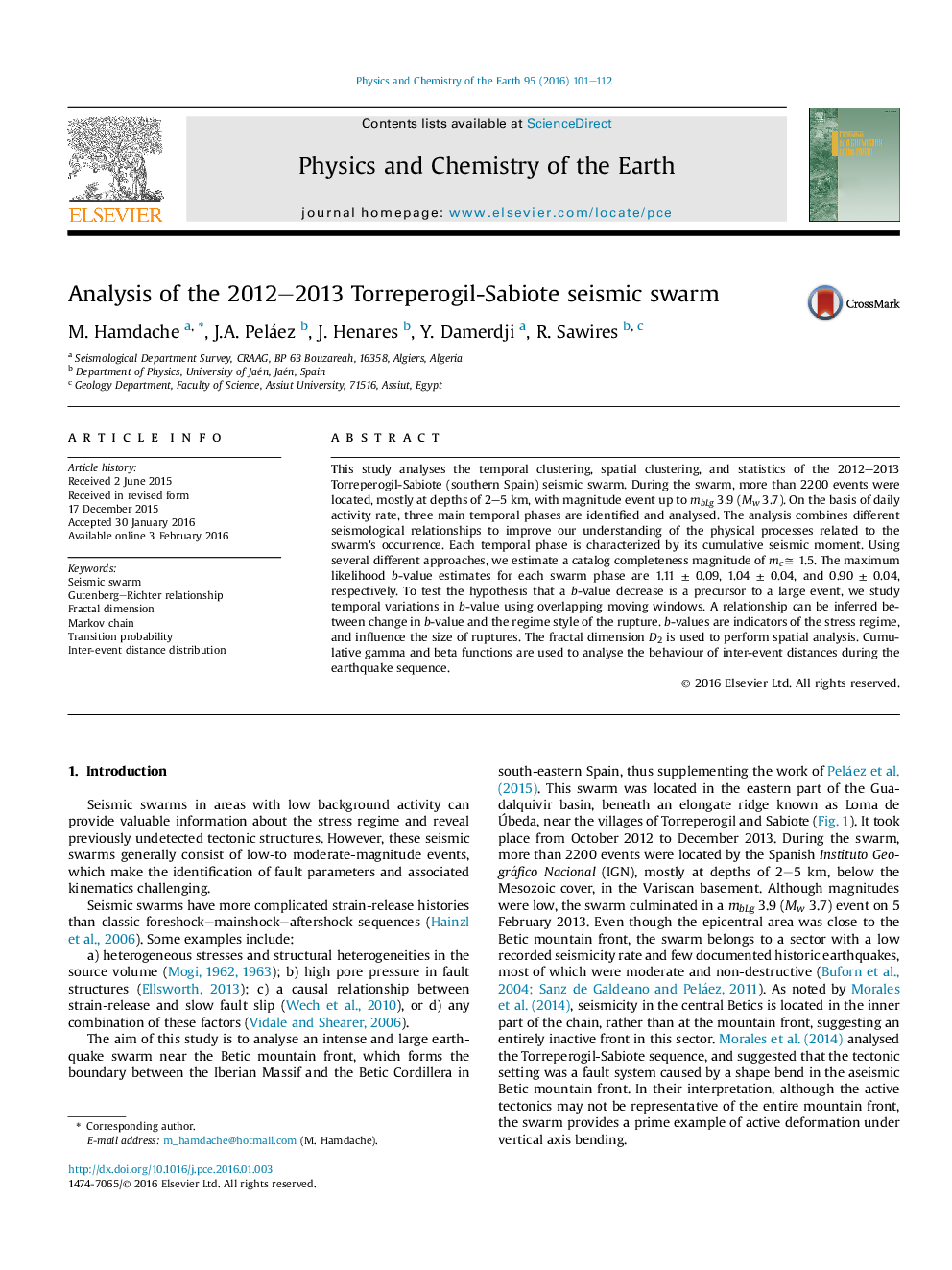| Article ID | Journal | Published Year | Pages | File Type |
|---|---|---|---|---|
| 4720791 | Physics and Chemistry of the Earth, Parts A/B/C | 2016 | 12 Pages |
•Torreperogil-Sabiote seismic swarm.•b-value as precursory. b-value and regime style of rupture.•Fractal dimension, Markov Chain, Gamma and Beta cumulative distribution.
This study analyses the temporal clustering, spatial clustering, and statistics of the 2012–2013 Torreperogil-Sabiote (southern Spain) seismic swarm. During the swarm, more than 2200 events were located, mostly at depths of 2–5 km, with magnitude event up to mbLg 3.9 (Mw 3.7). On the basis of daily activity rate, three main temporal phases are identified and analysed. The analysis combines different seismological relationships to improve our understanding of the physical processes related to the swarm's occurrence. Each temporal phase is characterized by its cumulative seismic moment. Using several different approaches, we estimate a catalog completeness magnitude of mc≅ 1.5. The maximum likelihood b-value estimates for each swarm phase are 1.11 ± 0.09, 1.04 ± 0.04, and 0.90 ± 0.04, respectively. To test the hypothesis that a b-value decrease is a precursor to a large event, we study temporal variations in b-value using overlapping moving windows. A relationship can be inferred between change in b-value and the regime style of the rupture. b-values are indicators of the stress regime, and influence the size of ruptures. The fractal dimension D2 is used to perform spatial analysis. Cumulative gamma and beta functions are used to analyse the behaviour of inter-event distances during the earthquake sequence.
